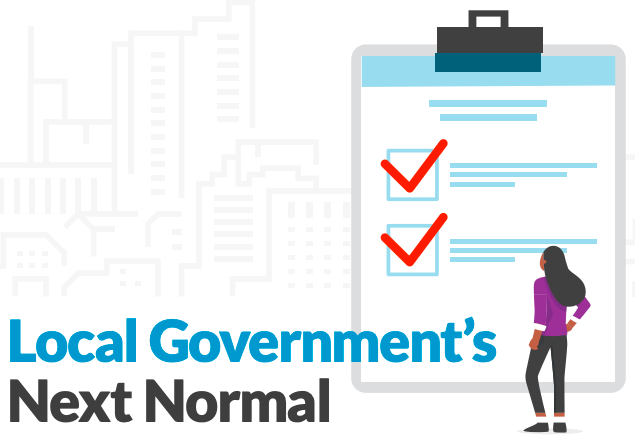
This is the report from the ELGL, The Atlas, and SeeClickFix “Local Government’s Next Normal” survey, conducted in June & July 2020.
Download the full report
About the Local Government’s Next Normal Report
Local governments across the country, and of all sizes, have been experiencing rapid shifts in priorities and work as a result of COVID-19. This survey was designed to better understand how local government work and public service delivery will look different in the future.
There were 386 local government officials and staff who shared their perspective on the impacts of COVID-19 on public service delivery. While 76 percent of respondents represented municipalities, insights were also provided by county employees, state officials, utility executives, tribal nation representatives and special district staff.
Uniquely, this survey captured the perceptions of local government leaders from small and midsize communities – a group that is underrepresented in public discussions, but very representative of most communities across the country.

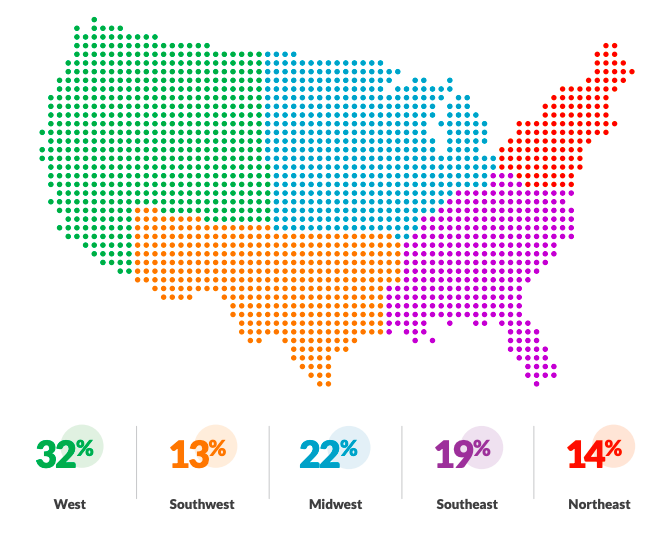
Who Responded to the Survey?
Importantly, insights were provided by individuals from a wide range of roles within local government. Respondents included mayors and city managers, planners and fire chiefs, communications directors and chief innovation officers. To better understand the data, in some places this report groups individuals into functional roles:
- 28% External: This group includes individuals who regularly engage with residents through their work in Communications, Economic Development, Emergency Response, Library, Parks & Recreation, Police, Fire-Rescue, and Courts.
- 25% Leadership: This group includes individuals who are responsible for overall local government management, including City Managers, Town Administrators along with Elected and Appointed Officials.
- 21% Internal: This group includes individuals who are responsible for making sure the local government itself runs smoothly through their work in Finance, Human Resources, IT & Innovation, Performance Departments.
- 15% Assets: This group includes individuals who manage and maintain city assets through their work in Environmental Services & Waste, Public Works, Transportation & Water Departments.
- 12% Development: This group includes individuals who are responsible for what the city will look like in the future through their work in Development and Planning.
Shifting Priorities
Rapid evolution of priorities reflect immediate response by local government to address COVID-19 and social justice protests. Across the board, respondents signaled expectations that local government work and public service delivery has been permanently changed.
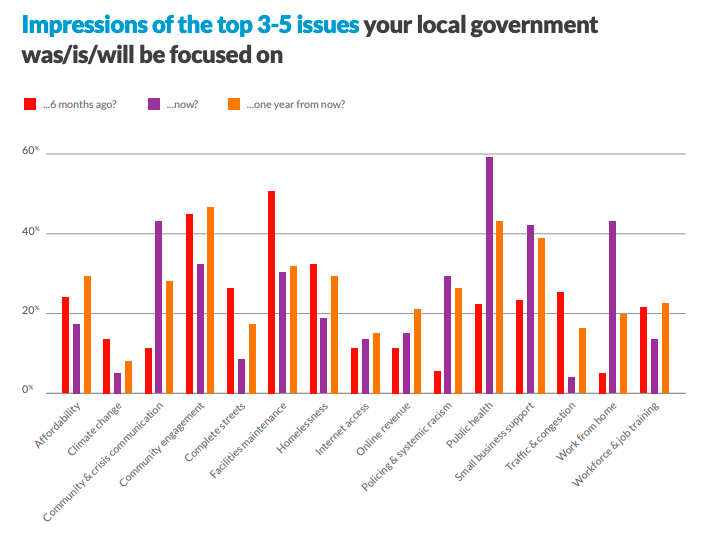
Things that seem to be highest priority for local governments right now and into the future? Community & crisis communications, policing & systemic racism, public health, small business support, and enabling work from home.

Things that are likely to see less focus by local governments because of the pandemic? Climate change, facilities maintenance, traffic & congestion, and homelessness.

Budget Concerns
Local governments of all sizes are concerned about revenue shortfalls and budget impacts.
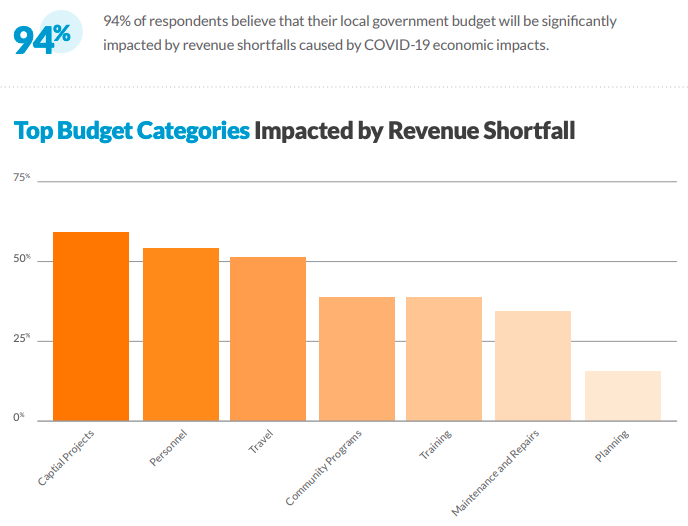
Interestingly, individuals who fall into the leadership group were more concerned about capital project spending being impacted than others (70 percent identified in top three) and less concerned about community programs being cut (only 29 percent identified in top three).
Managing People
Survey findings show that there’s a significant impact on the local government employees and how they view their jobs and their roles in their organizations. These findings, paired with findings that local governments are seeking technology solutions, indicate that human resources, community engagement, and payroll and benefits should be included in the discussion about what technology can do to assuage the concerns raised about employee leadership development, benefits and retirements, and morale.

A majority of respondents in larger communities indicate that “new leaders” have been uncovered during the pandemic.
A large percentage of respondents (70 percent) in larger communities say that planned retirements may be put on hold, likely due to concerns about the effects of COVID on the economy and retirement portfolios.
Responses from both large and small communities indicate that employees aren’t doing well: morale has been significantly impacted due to concerns about COVID, constantly changing headlines and news, and new and revised working scenarios.
Silver Linings
While closed offices have exacerbated some existing challenges in local government, respondents report that they have also opened the door for new leaders and expanded use of data-driven decision making especially in mid-size and larger local government organizations.
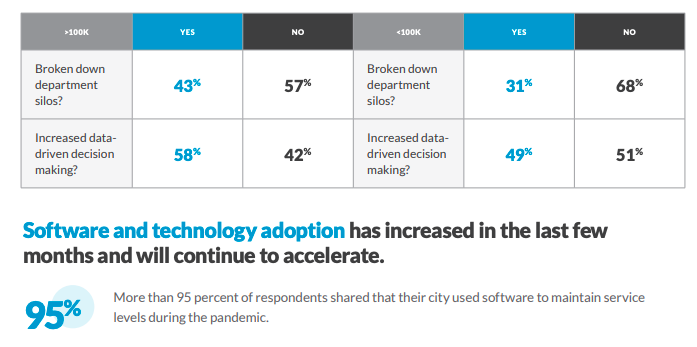

Anticipated Future Software & Technology Projects
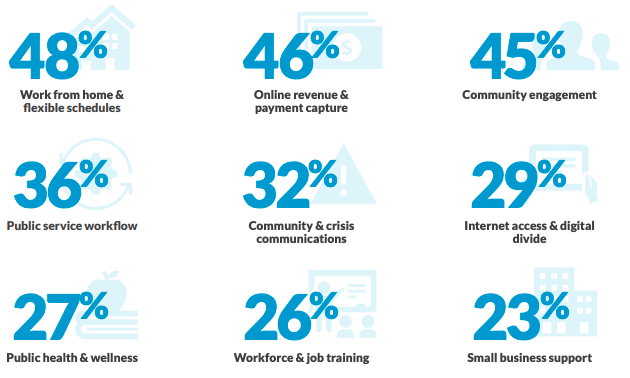
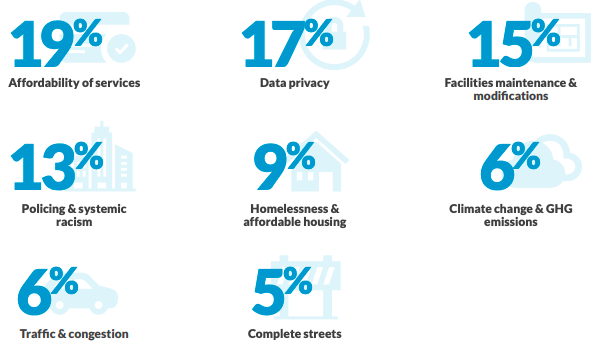

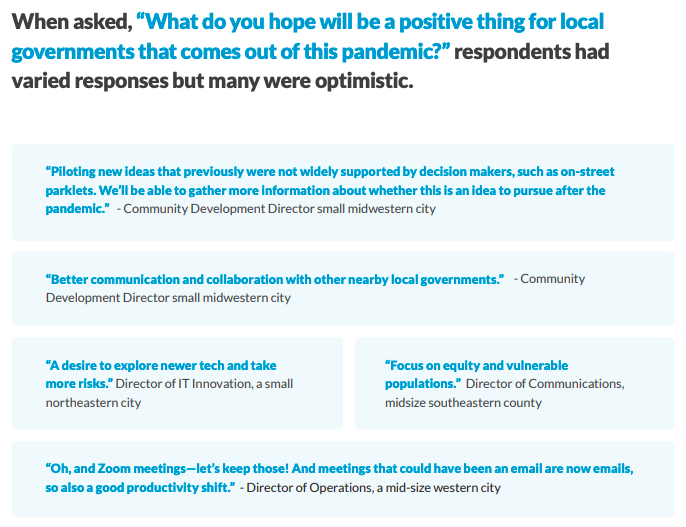
Conclusion
Like much of the world, it’s clear that local government and public service delivery will look a lot different because of COVID-19. While there are still many challenges ahead as local government organizations adjust to the next normal, there are early signs that local governments will come out of this stronger, smarter and more sustainable.
Continue the Conversation
Share your takeaways from this report. What surprised you? What’s consistent with what you’re seeing in your organization? Tag us on Twitter and let’s continue the conversation!
